The Firebird is Pivot’s longest-travel enduro bike, boasting 165mm of rear-wheel squish, along with stretched-out geometry designed to boost high-speed stability when tackling the wildest trails out there.
For my latest long-term test review, I’ve gone for a frame-only option, rather than the standard build. Why? Well, I was keen to spend some time on a variety of products this year, and this felt like the best way to go about it.
As it stands, my custom build isn’t a million miles away from Pivot's offering, but there are a number of choice tweaks that make it a little different from the norm.
It’s taken a little while to gather all the parts for the build, meaning I’ve only had a handful of days aboard the bike so far. However, the days I have had on it have been interesting and fun in equal measure.
While the masses of travel is nothing exactly new for me, having a bigger 29in rear wheel in place, after a year on a mixed-wheel bike, has taken some adjusting to.
But, my lord, this thing is fast. Give it a whiff of speed and it’ll grab onto it with both wheels and do everything it can to hold onto it. There’s room for improvement, though, largely down to one of my spec choices.
It’s a work in progress, but the potential on offer has got me desperate to get back onto the bike as soon as humanly possible.
Pivot Firebird frame, suspension and specification
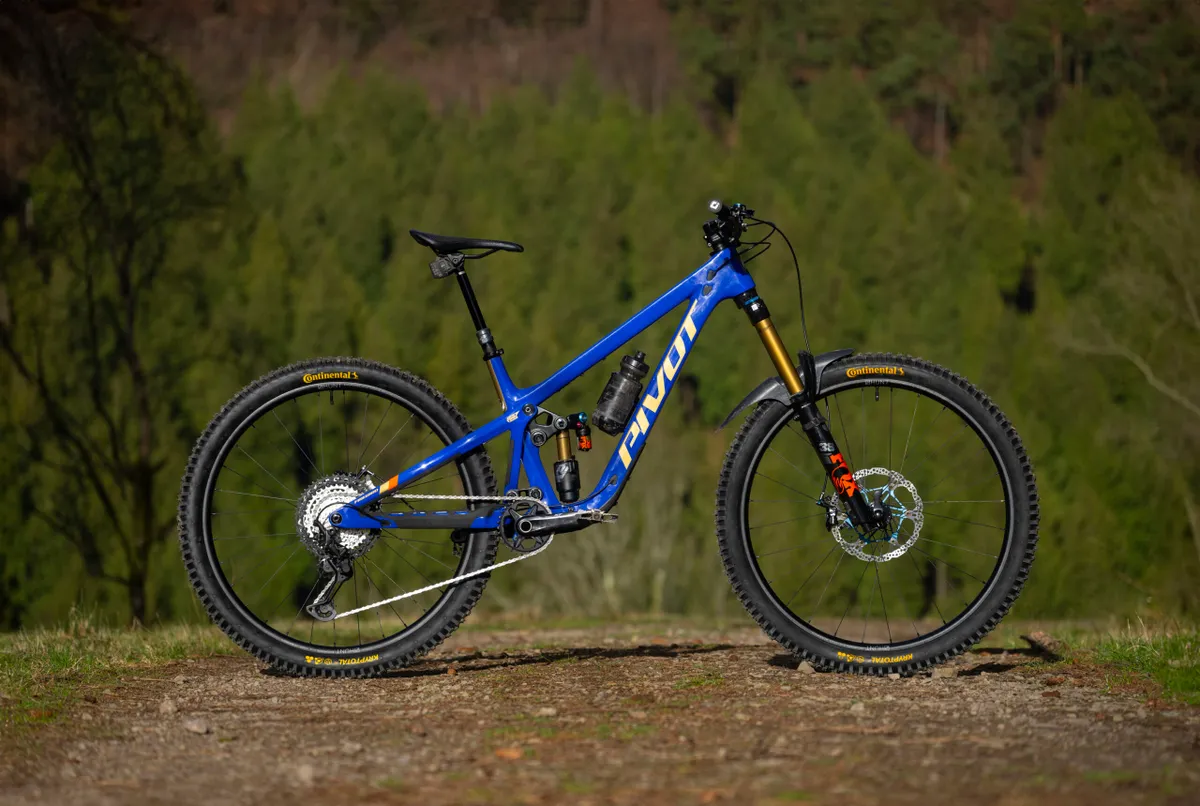
The Firebird frame is a full carbon fibre affair, which Pivot says is tuned specifically across all sizes, to help give each rider, no matter how tall or small, the same experience on the bike.
At the rear, there’s 165mm of travel, delivered via the DW-link suspension. This system uses two short links to connect the front and rear triangles and dictate the suspension kinematics.
The lower link was lengthened during the last Firebird update to better mimic the wheel path of Pivot's downhill bike, the Phoenix, in a bid to make it even more capable when charging through square-edge hits.
Pivot offers its own full builds with a coil or air-sprung shock from Fox. This is because there’s enough progression designed into the suspension system to ensure either spring type will work, providing you’ve tuned the shock to suit.
I opted to go for an air shock, simply because tinkering with spring rates is that bit simpler, plus air shocks are so good now, I wasn’t put off by using one.

It’s worth taking note of the Super Boost Plus rear-axle standard. This is the first enduro bike I’ve had that’s used this measurement and, as a result, none of my spare wheels will fit straight into the frame.
Pivot says it has done this to add stiffness and control. I’d say it's achieved that aim, but I’m not totally convinced it needed to. More on that later.
The finish of the frame is seriously impressive, even down to the covers that clamp the cables into the internal routing.
Still, it’s a seriously expensive bit of kit.
Pivot Firebird specification
- Sizes (*tested): S, M*, L, XL
- Weight: 16.4kg (size medium, with pedals)
- Frame: carbon, 165mm travel
- Shock: Fox X2 Factory
- Fork: Fox 38 Factory, 180mm travel
- Shifters: Shimano XT
- Derailleurs: Shimano XT
- Cranks: Shimano XT
- Wheelset: Hunt Enduro Wide V2 29
- Tyres: Continental Kryptotal Fr Enduro Soft 29x24.in (fr) / Continental Kryptotal Re Downhill Soft 29x2.4in (r)
- Brakes: Hope Tech 4 V4 (220mm / 200mm rotors)
- Bar: Burgtec Ride Wide Alloy Enduro, cut to 750mm)
- Stem: Burgtec Enduro Mk3, 42.5mm
- Seatpost: RockShox Reverb AXS, 160mm
- Saddle: Ergon SM Comp
Pivot Firebird geometry
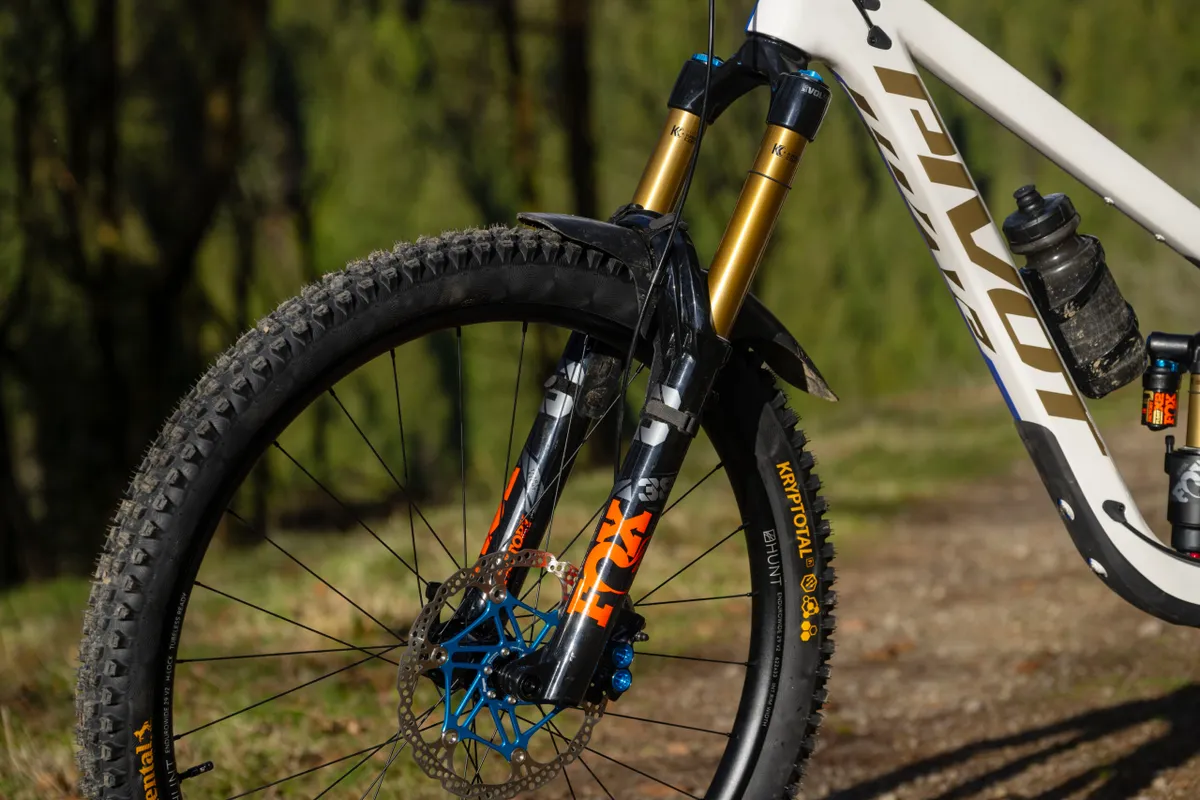
Because the Firebird is built to be ridden as fast as possible, its dimensions are designed to suit.
Before we get stuck into the numbers, because I’ve plugged a 180mm fork into the Firebird frame (the longest travel advised by Pivot), my geometry isn’t exactly identical to that of Pivot's chart.
Why have I gone for so much travel up front? In short, I just didn’t have time to reduce the travel to 170mm, but it’s something I plan to do very soon.
That’s largely down to how much it lofts the bottom bracket height up. Pivot’s geo chart says the bottom bracket sits 350mm off the floor in the low setting as standard. With the 180mm-travel fork in place, it’s now up to 355mm, which is just a little too tall for my liking.
Other key dimensions I’ve measured include the 63.8-degree head angle, the 465mm reach and the 815mm front centre, which is reasonably stretched for a medium-sized frame.
The seat tube angle is relatively steep at 76.3 degrees.
Pivot changes the effective chainstay length across the size range. The medium I have here sports 434mm chainstays, which is pretty much the standard across many bikes of this ilk and size.
One final number to mention is the effective top tube length. At 624mm, it’s quite long for a size medium.
Why did I choose this bike?
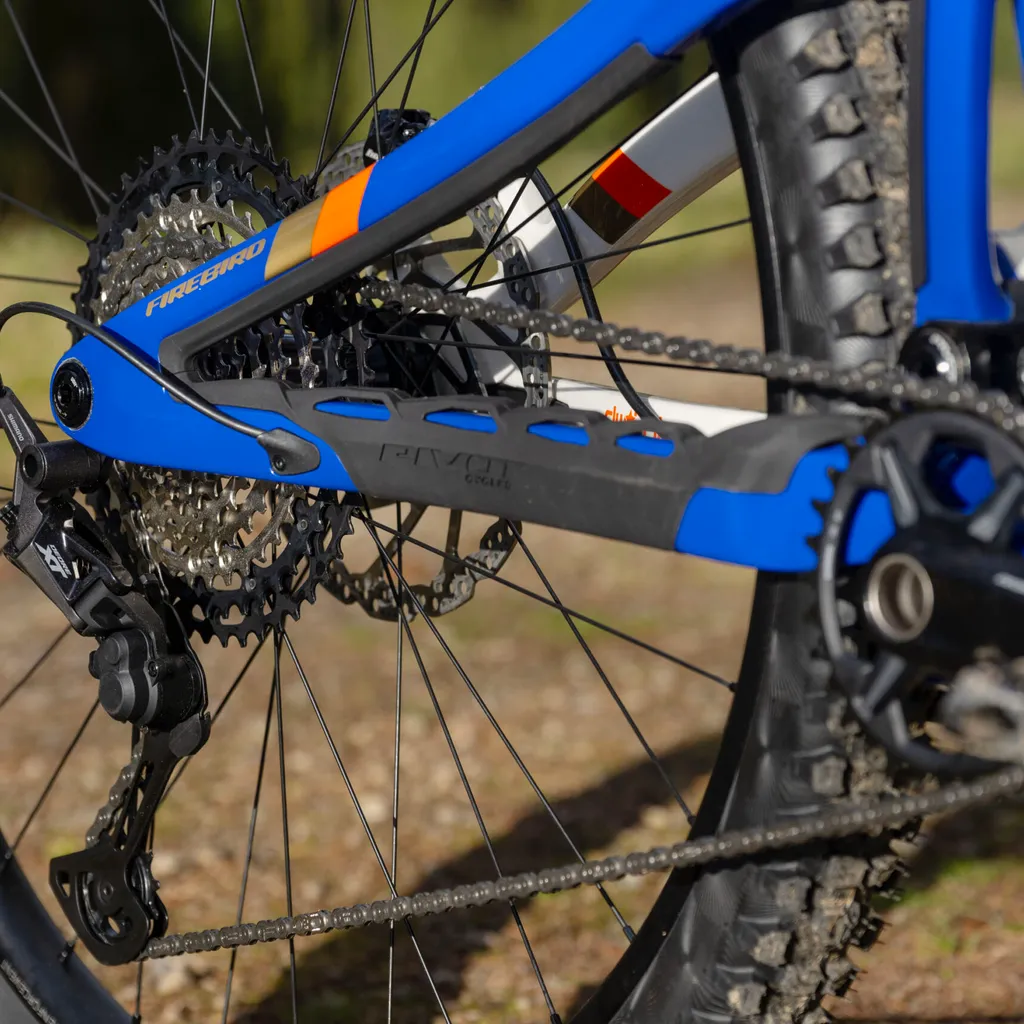
I’d love to say something clever or smart here, and while it’s true I wanted to try the Firebird because the numbers intrigued me, it really boiled down to me being such a big race fan.
After seeing the likes of Bernard Kerr, Morgane Charre and Eddie Masters ripping the life out of the Firebird on some of the coolest trails in the world, my desire to ride one become more than just an itch I needed to scratch.
I’d spent a decent amount of time on the Phoenix DH bike (back when it was on 27.5in wheels) and really got on well with it. Despite the masses of travel, it retained an efficient, eager feel that I was hoping would carry over to the Firebird.
Pivot Firebird initial setup
Once built up, I realised the Fox X2 Factory shock at the rear was cavitated and in need of a service. Thankfully Saddleback, the UK distributor for Pivot, sorted this in a couple of days, which was fantastic.
Aside from that, I’ve gone with 30 per cent sag at the rear, all damping adjustments wound off and no spacers inside the shock to suit my 68kg weight.
At the front, I’m running 77psi with no spacers inside and all the damping adjustment wound off.
The only other personal tweak is to cut my bar down to 750mm and tip the saddle nose downwards, largely to create a comfier position with a straighter back while I’m climbing.
Pivot Firebird ride impressions
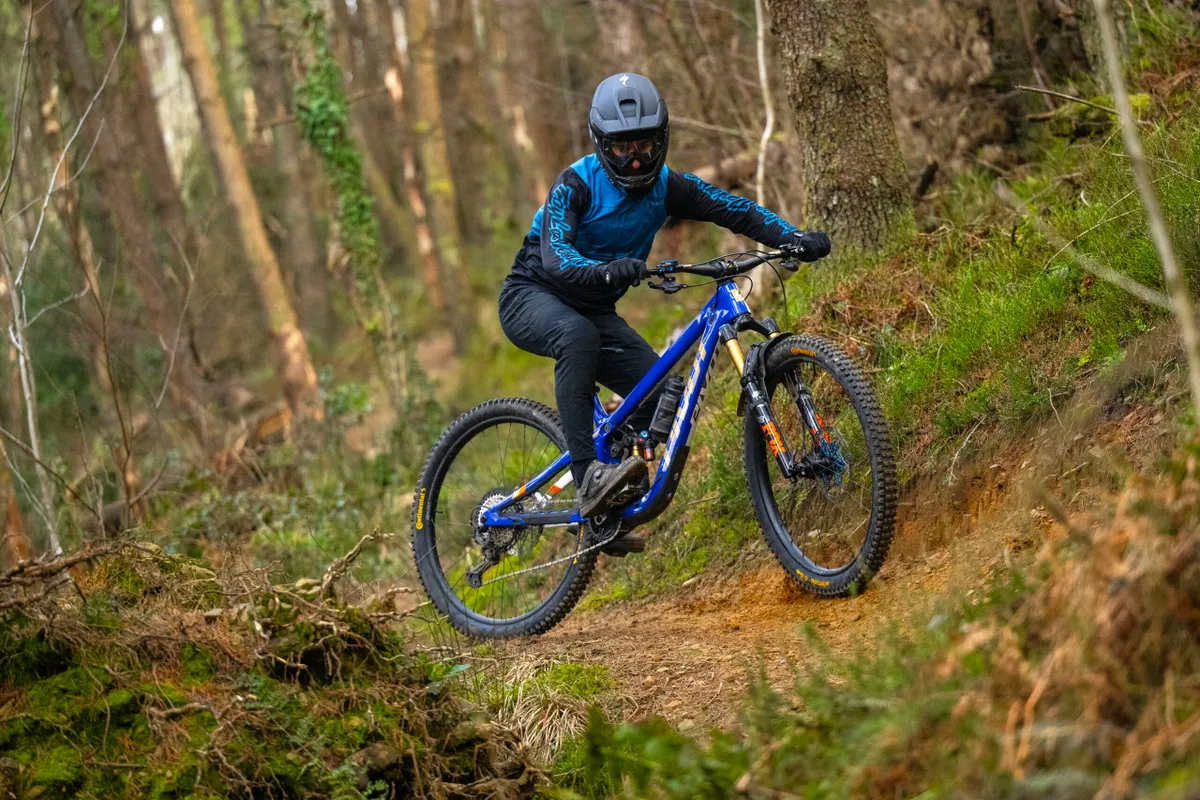
Straight from the off, the Firebird feels lighter than the 16.4kg weight might suggest when climbing.
I put this down to a couple of things. First off, get the cranks spinning and the rear suspension seems to stay incredibly calm. We’re not talking quite as calm as Captain America in a crisis, but when pointed uphill and with your backside planted on the saddle, the Firebird feels incredibly efficient.
Secondly, the frame is stiff. The short, stout links, carbon tubes and that broad Super Boost Plus axle spacing seemingly add up to a bike that feels taut and urgent when you’re putting the power down.
The relatively long effective top tube measurement also makes it feel more stretched out than most of the enduro bikes I spend a lot of my time on. Compared to a good chunk of those, the Firebird is around 25-30mm longer in this particular area, making me reach that bit further to the bars.
That’s okay, too, because it feels good on steeper climbs. I was initially tempted to shift my stem up 5mm on the fork steerer tube to raise my bar a little more and make things feel a little more upright, but because I like how the front of the bike feels and my bar height when I’m up out of the saddle, I’ve left it as is for now.
Finally, although I ran Continental tyres on my bike last year, I’ve gone for the same tread and rubber compound front and rear, but moved to a downhill-casing tyre at the rear, for a bit more peace of mind.
What's most impressed me about the Conti tyres is that despite the dependable grip and how well they wear, they seem to roll at a decent pace too. So, although I’ve got a heavier rear tyre out back now, the Firebird feels sprightlier uphill than many of its counterparts that are lighter and come with less robust rubber.
Carving corners
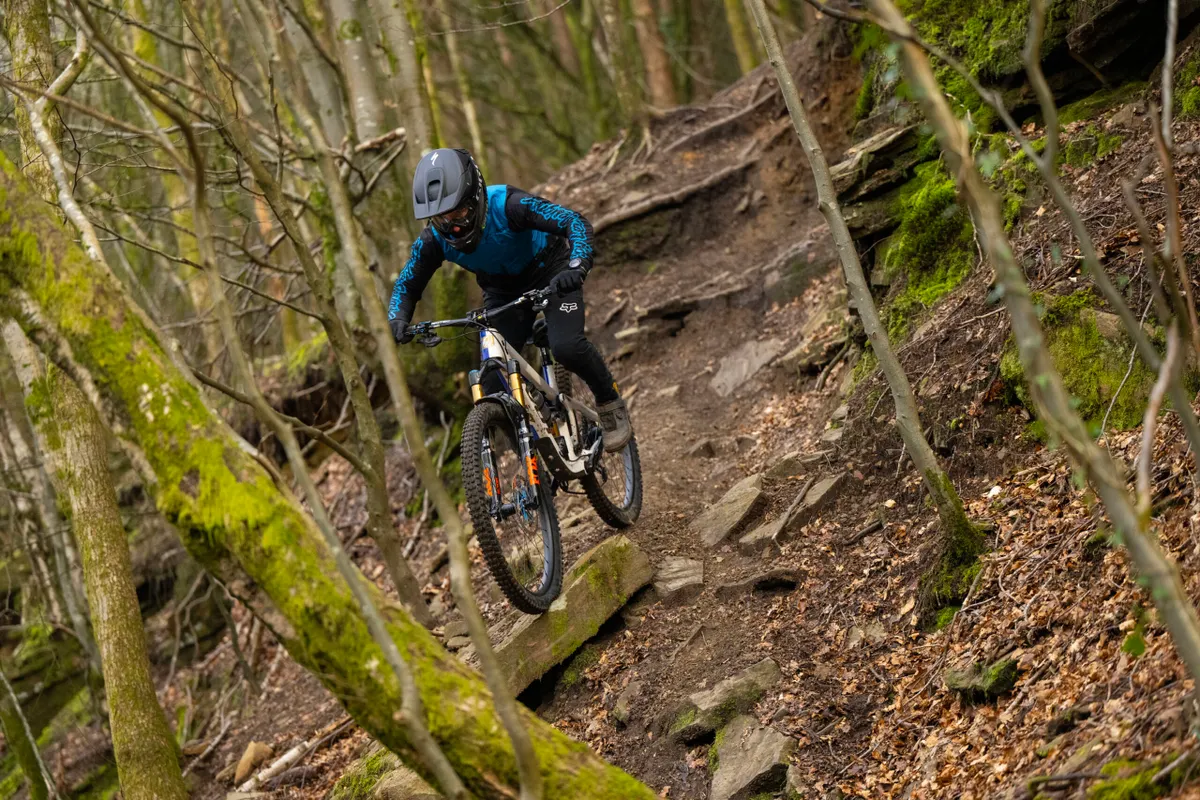
The Firebird’s climbing prowess is a bonus. It’s nice it’s so well-mannered on the climbs, but I’d be okay if it wasn’t, just as long as it was a rocket ship on the way back down.
Thankfully, it doesn’t disappoint in this department either.
Getting it up to speed feels easy. The pick-up from the Hunt wheels is snappy enough to keep things feeling reactive when you get on the gas, and as soon as the Firebird gets a whiff of pace, it’ll keep it for as long as it possibly can.
I think I’m in a good place with the suspension balance, having now experimented with fork volume spacers, before settling on using none.
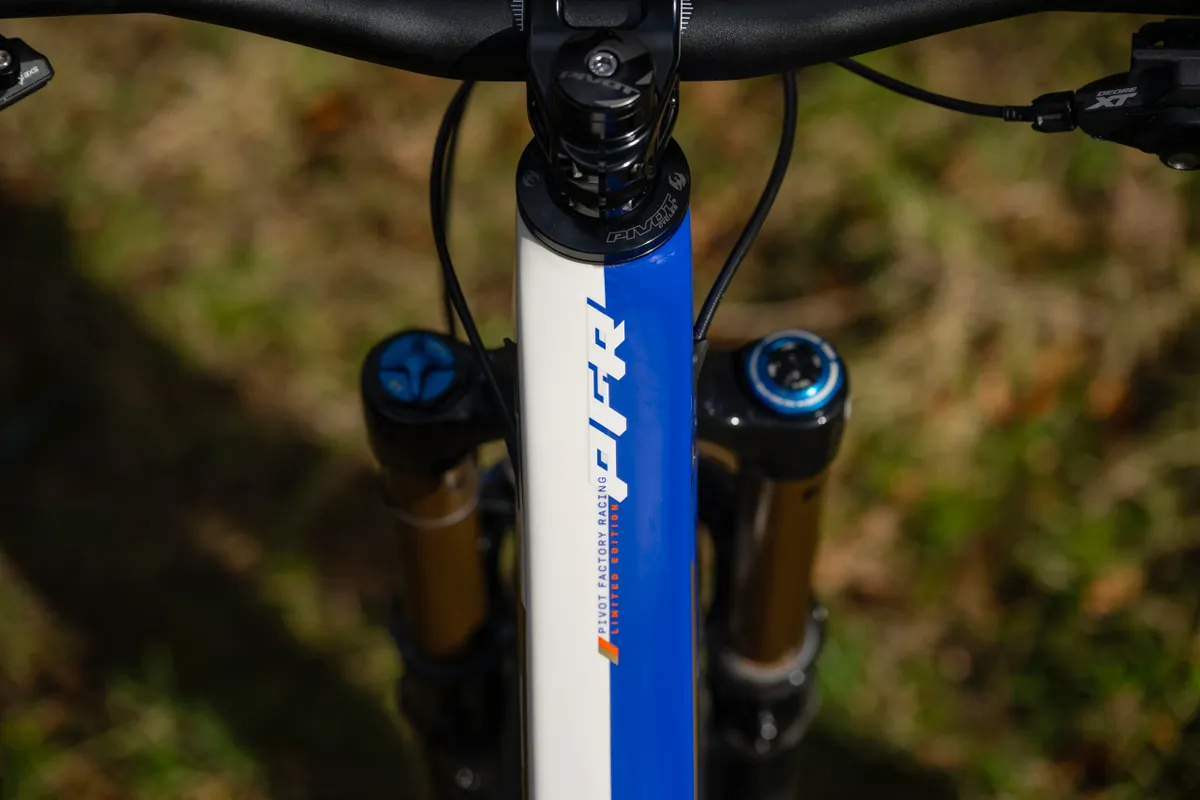
This means I can confidently stand in what feels like the centre of the bike and let it do its thing as I keep it on track.
The rear suspension is nice and supple, tracking the terrain effortlessly. Smashing through sections at pace feels like a confident affair.
Bank it over into a cut-up, bump-riddled turn, though, and it's not quite there.
While the frame’s stiffness means there’s a bit more in the way of feedback once the bike is pitched over, it’s the height of the bottom bracket that got me feeling a little unsettled at first.
With that 180mm fork in place, it’s just too high right now, and I need to get the fork travel reduced to help this. I’m not saying I want to be clipping my pedals on the ground constantly, but getting the Firebird’s belly a little closer to terra firma would only help the handling, in my opinion.
It’s a work in progress for sure. But there’s no denying the potential that’s already shining through.
Parts mean prizes
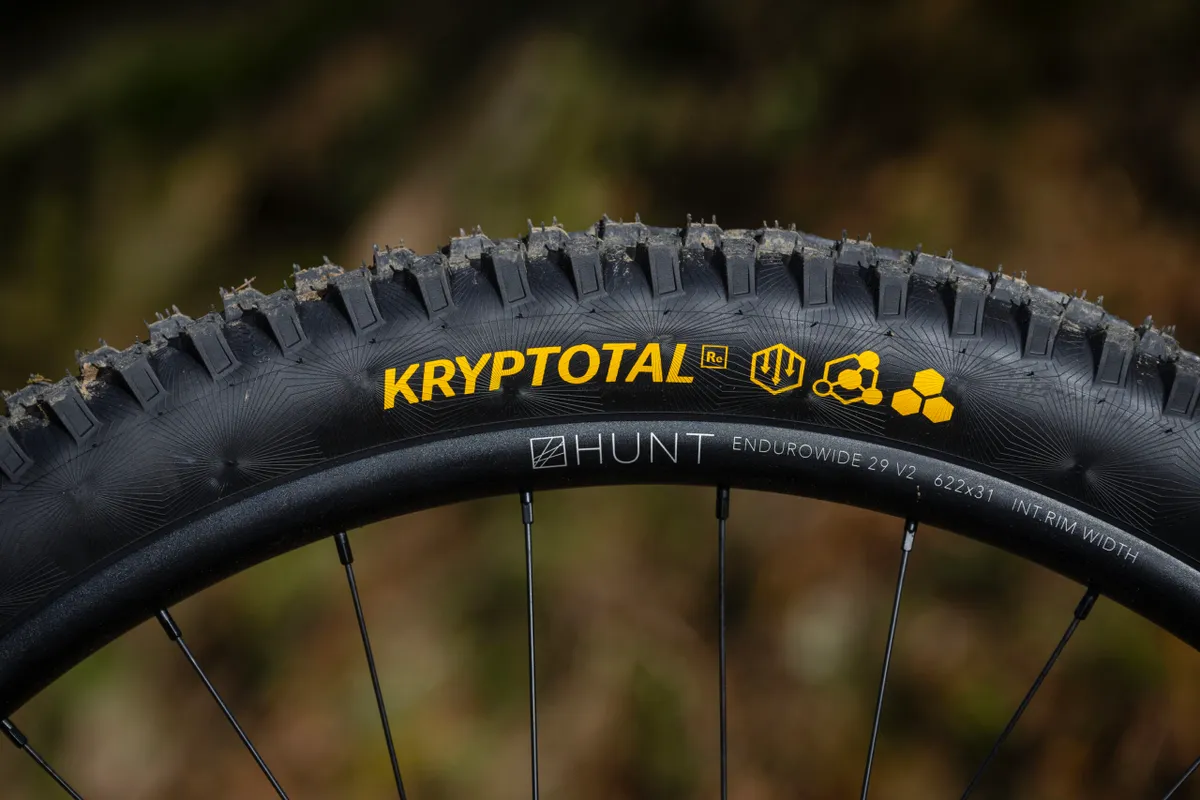
Along with the tyres, I’m pleased with the rest of the spec, too. Well done, me!
The Burgtec bar and stem are nicely finished, well-shaped and feel solid.
Similarly, the RockShox Reverb AXS post, although well-used (and pulled from a previous bike) is still probably my favourite dropper post of all time. I’d love the stack height to be a little shorter, and ideally, I’d run the 170mm dropper post if I had one, but there’s no getting away from how slick this thing is.
Something else that needs mentioning is the brakes. As I’ve said, the Pivot is keen to keep its speed and good at doing so. As a result, having good anchors to slow it down when needed is important.
The Hope Tech 4 V4s are formidable stoppers. The power is immense but easy to control – something I’ve really come to appreciate on one of my regular test tracks, which is steep and rough.
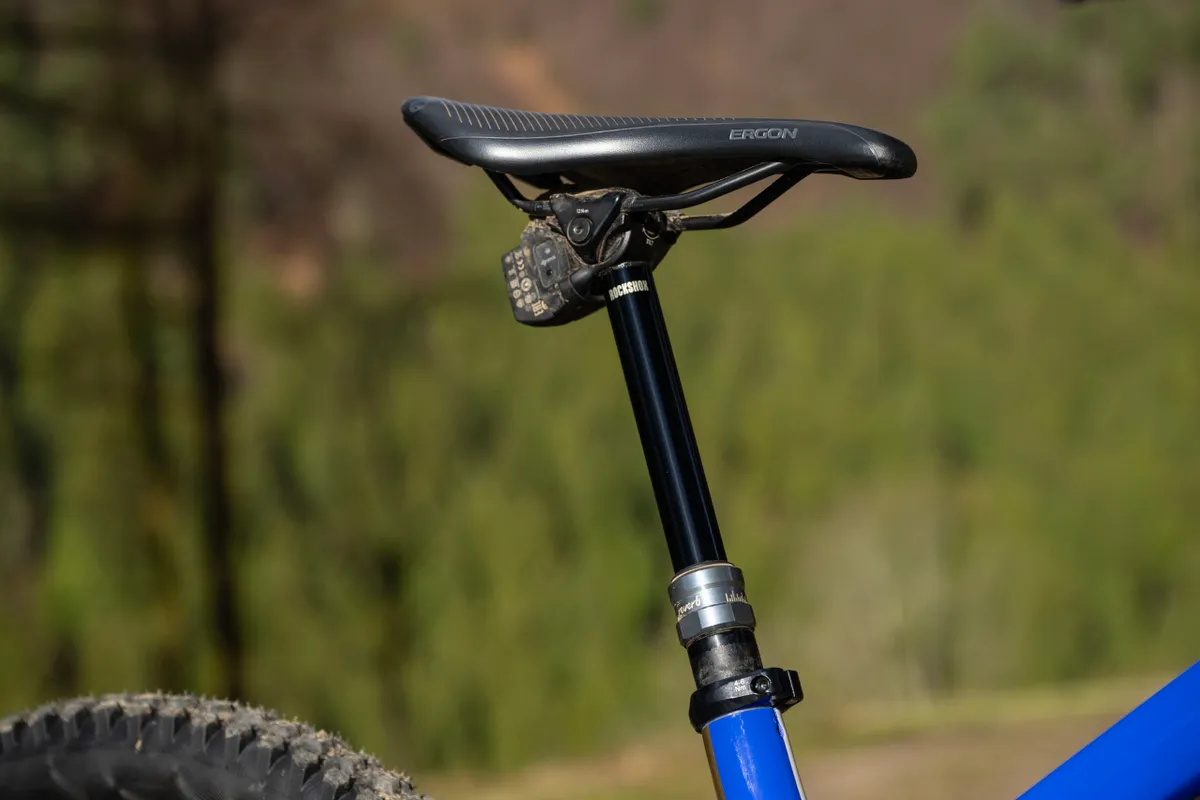
While I don’t regret including the Shimano XT drivetrain, I’ll admit, it’s certainly not as smooth as the current SRAM equivalent once it’s caked in mud.
Yes, on the whole, this build is working really rather well so far. But there is work to be done.
Pivot Firebird upgrades
As I’ve mentioned already, the 180mm-travel fork is throwing things out a little too much for my liking, so the first port of call is to get the travel reduced.
Other than that, I’m not keen on changing anything else on the Firebird for some time.
BikeRadar‘s long-term test bikes
BikeRadar's long-term test bikes give our team the opportunity to truly get to grips with these machines, so we can tell you how they perform through different seasons and on ever-changing terrain, through a year of riding.
Some choose a bike from their favoured discipline and ride it hard for a year, others opt for a bike that takes them outside of their comfort zone.
We also use our long-term bikes as test beds for the latest kit, chopping and changing parts to see what really makes the difference – and help you decide which upgrades are worth spending your money on.
These bikes also provide an insight into the team's riding through the year – how they like to ride and where life on two wheels takes them, from group rides on local lanes and trails, to adventures further afield.
To see all of the BikeRadar team’s long-term test bikes – and to stay up-to-date with the latest updates – visit our long-term review hub.
Product
| Brand | pivot |
| Price | 4200.00 GBP |
| Weight | 16.4000, KILOGRAM (M) - With pedals |
Features
| Fork | Fox 38 Factory |
| Tyres | Continental Kryptotal Fr Enduro Soft 29x24.in (fr) / Continental Kryptotal Re Downhill Soft 29x2.4in |
| br_brakes | Hope Tech 4 V4 (220mm / 200mm rotors) |
| br_cranks | Shimano XT |
| br_saddle | Ergon SM Comp |
| br_wheels | Hunt Enduro Wide V2 29 |
| br_seatpost | RockShox Reverb AXS, 160mm |
| br_handlebar | Burgtec Ride Wide Alloy Enduro, cut to 750mm |
| br_rearShock | Fox X2 Factory |
| br_availableSizes | S, M*, L, XL |
| br_rearDerailleur | Shimano XT |
| br_frontDerailleur | Shimano XT |
